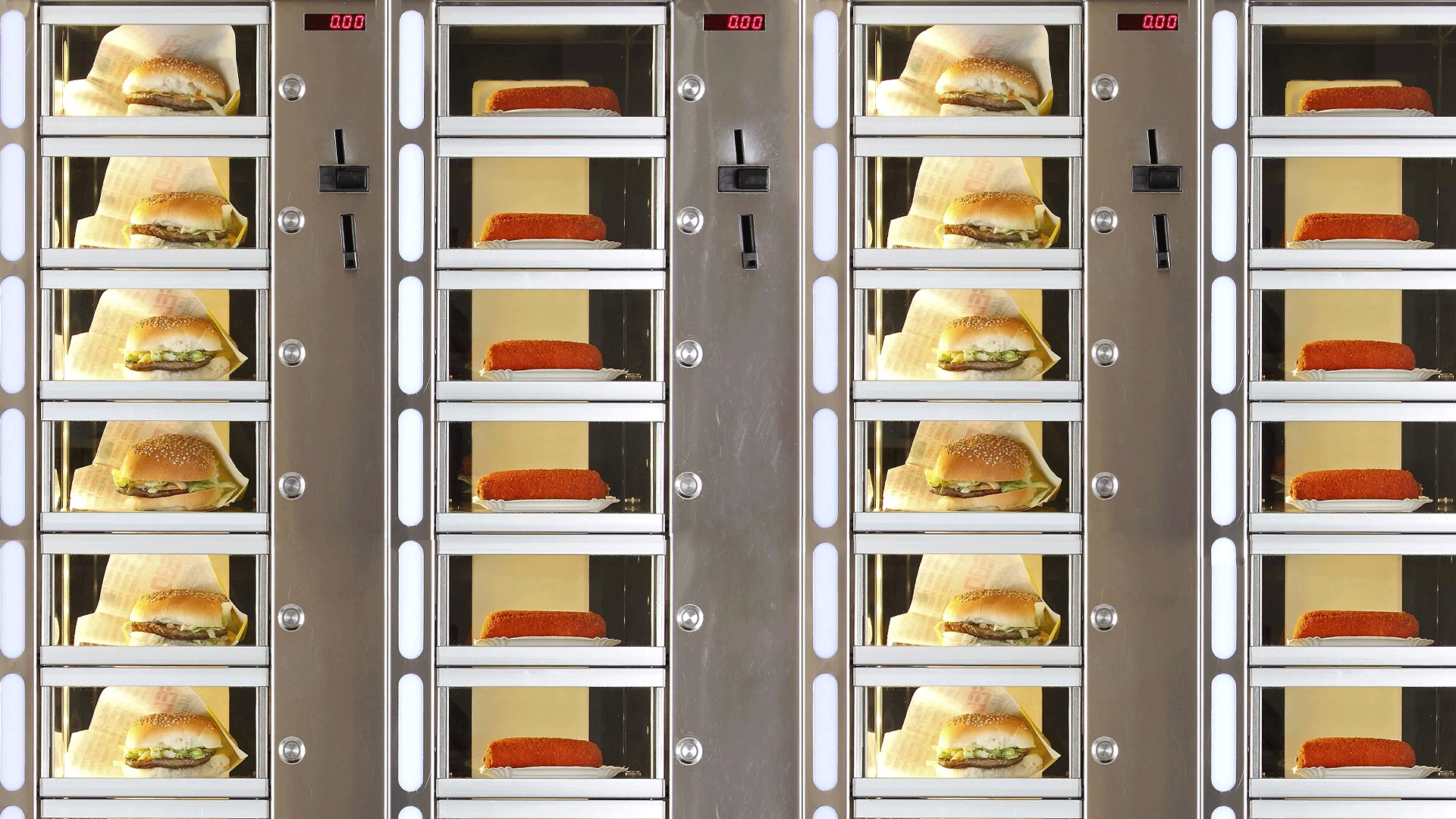Overweight or obese:
food environment
to blame?

We know that overweight and obesity can lead to many health problems and are still increasing worldwide. According to scientists from the University of Amsterdam, we must tackle this problem at its core: the public space full of unhealthy food. 'It is not just about eating less, exercising or even a diet pill,' says sociologist and overweight researcher Christian Bröer. 'The perverse thing is that by concentrating on those areas we are actually maintaining the market that produces overweight.'
Large-scale measures are clearly needed – but what approach should we be taking?
The lawyer: ‘Make healthy eating a right’
‘When almost 60% of the population - and 20% of children - are overweight, this is no longer an individual problem, but a collective problem,’ agrees professor of Health Law Anniek de Ruijter. ‘The government has the responsibility to protect its citizens against developments in the environment that cause overweight, such as the exponential increase in the number of fast-food restaurants.’

Together with other academics and several municipalities in the Netherlands, De Ruijter investigates how to make the food environment healthier. Freedom of choice is crucial here.
‘You can decide for yourself what to do with your body. You can smoke, climb a dangerous mountain, or go outside without a coat when it’s raining –you still have the right to medical treatment when necessary as a result. So, you are also free to choose how you eat, healthily or unhealthily. But there should be something to choose from.’
Companies also have a freedom to do business.
‘But that freedom is limited by the public interest. If a company dumps poison or pollutes the air in your neighbourhood, the government must intervene. The same applies to the food environment. The government does not determine what you can eat, but it must ensure that there is sufficient healthy food available in your neighbourhood. Otherwise, your food environment is polluted.’
Measuring instrument
To help municipalities creating healthy environments De Ruijter and colleagues developed a special measuring instrument. This instrument gives food selling companies a plus (healthy) or minus (unhealthy) score based on the healthiness of their food supply. It then adds all scores together for a given street or neighbourhood, resulting in a plus or minus for that area. Municipalities can use this information to work towards 0 scores for areas with minus scores. For example by blocking permits for new providers with a minus score, but welcoming those with a plus score.

In an initial test, a real shopping street received a food score of -77. ‘There is hardly any healthy food on offer there,’ says De Ruijter. ‘Using our instrument, municipalities can now do something about this and protect both citizens’ freedom of choice and their access to healthy food. Especially for children, as the government has an even greater duty of protection here.’
The sociologist: ‘Make environments healthier together with young people’
To offer children and young people a healthy food environment, sociologists included young people as co-partners in their project. ‘By creating new policy together with young people, you get involvement and mutual learning going,’ says Bröer. Working with more than 200 adolescents in five European countries, scientists came up with ways to redesign environments and tested these ideas.
Kitchen Take-Over
For example, they developed the Kitchen Take-Over, in which young people choose their own recipes and prepare their own healthy meals. ‘The food in our canteens is not very tasty and often unhealthy,’ said one of the young participants. A successful pilot of the Kitchen Take-Over at a school in Almere was picked up by De Gezonde Schoolkantine, a programme that encourages schools to make their eating environments healthier. ‘Small initiatives can certainly trickle down and make an impact,’ says Bröer.
The young people also advised making healthy food more affordable and easily accessible, placing it prominently at the front of canteens and supermarkets. In contrast, they suggested increasing the price of unhealthy foods like chips and energy drinks and giving them less shelf space.
The psychologist: ‘Remove triggers in the environment’
Psychologists argue that you need to approach the environment from yet another angle when combating obesity. ‘Triggers in our environment, such as certain advertisements or smells, lead to strong associative and automatic behaviour,’ says clinical psychologist Sanne de Wit, who studies habitual behaviour. She gives the example of the well-known M-logo, which most people associate with unhealthy foods like cheeseburgers. ‘Just seeing this logo can trigger a craving for fast food.’
Health warnings
De Wit and her colleagues investigated whether health warnings in the environment help people resist such triggers and make healthier choices. For example, the Nutri-Scores often seen on food packaging which inform users about the composition of a product.
The researchers discovered that such health warnings actually only work in an environment without unhealthy triggers. 'Warnings that play on conscious choices have little effect if there are triggers in the environment that people associate with unhealthy snacks. In that case people are still likely to choose the unhealthy option,' says de Wit.
De Wit suggests people need to be less exposed to signals that stimulate unhealthy choices, such as junk food advertisements, and that healthy choices need to be made more attractive through promotions and higher visibility. 'That way, people are subtly steered in the right direction.'
UvA Researchers
Prof. dr. mr. A. de Ruijter
Anniek de Ruijter is a Professor of Health Law and Policy at the Faculty of Law.
Dr. C. Bröer
Christian Broër is an Associate Professor in the Department of Sociology at the Faculty of Social and Behavioural Sciences.
Dr. S. de Wit
Sanne de Wit is an Associate Professor in the Department of Clinical Psychology at the Faculty of Social and Behavioural Sciences.
Other articles
© Universiteit van Amsterdam
Artwork by Objekt Studio
Images via Pexels.com and Unsplash.com













